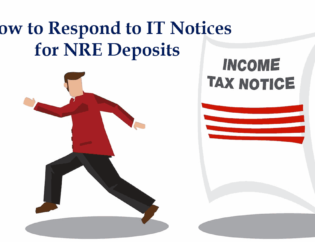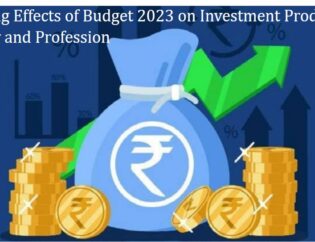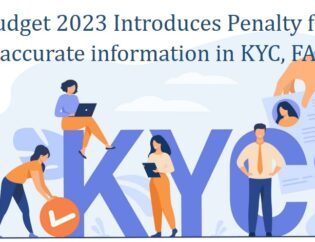On March 27, 2020, RBI introduced very important measures to combat adverse effect of covid-19 on the Indian economy.
These measures are summarized, explained in simple terms and analyzed for its effect below. Overall effect of these measures on various asset classes and how to invest in current turbulent is also analyzed.
1. Repo Rate Reduced by 0.75% (75 basis points) to 4.4%:
Until yesterday, banks were borrowing from RBI at the rate of 5.10%. From today, they will be able to borrow at 4.4% only.
Effect: As the cost of funds has gone down significantly to 4.4%, the banks are expected to pass on the savings to the customer and as a result, the interest on loan could come down.
2. Revserse Repo rate reduced by 1% (100 basis points) to 4%:
Currently, banks were not lending but were depositing money with the RBI and earning 5% interest (reverse repo rate). Whopping 3 lakh crores were parked with RBI in March on a daily average basis. Now, they will only get 4% interest on the money parked with RBI.
Effect: As interest on savings account for most of the banks is 4%, now with interest on money parked with RBI (reverse repo rate) reduced to 4%, banks will have to use the money (to lend) in loans or securities that generates higher interest than 4% i.e. to their customers.
3. TLTRO (Targeted Long Term Repo Operations) of 1 L crores:
In simple terms, RBI will give loan (deposit money) with bank for 1-3 years at 4.4%. However, this money can only be ultimately given to corporates (Targeted) i.e. invested in investment grade corporate bonds, commercial paper and non-convertible debentures. Money can be used for buying such securities in primary market (directly from companies) or in secondary market (from other investors including Mutual Funds or NBFCs. Also, these investments are to be classified as held to maturity so no effect of market valuation.
On March 27, first auction of Rs. 25,000 crores was conducted. Total of 11 bids were received for 60,000 crores and partial allotment @ 41.33% of Rs. 25,009 crores were made.
Effect: As the funds are to be invested only in the corporate securities, the yield (effective interest rate) on corporate securities will come down and spread (difference between RBI rate and Corporate bond yield) will also come down showing higher liquidity and confidence in the corporate securities.
4. CRR reduced by 1% (100 basis points) to 3% for 1 year:
Bank will now only keep 3% of their total deposits in Cash. Until yesterday, they were required to keep 4%. The reduced CRR is only for 1 year.
Effect: Banks will be able to utilize and lend additional 1.37 lakh crores.
5. Minimum daily CRR balance maintenance requirement reduced from 90% to 80% for 3 months:
While overall, banks need to maintain CRR, on a daily basis minimum balance needed to be 90%. However, due to disruption and hardship faced by banks, the daily minimum balance requirement has been relaxed to 80% for 3 months until June 26, 2020.
Effect: Banks will be able to concentrate more on lending and less on reporting or compliance.
6. Marginal Standing Facility (MSF) limit increased from 2% to 3% for 3 months:
Banks had access to borrow from RBI overnight in case of urgent needs upto 2% of time and demand deposits. Now, they will be able to borrow up to 3% until June 30, 2020. The MSF rate is 0.25% higher than policy rate i.e. 4.65%
Effect: Banks will be able to borrow from RBI additional 1.37 lakh crores @ 4.65% and lend to their customers.
7. Moratorium and Deferment of loan installments and interest:
RBI has permitted banks to allow moratorium on payment of installments of term loans and deferment of interest on working capital facilities outstanding as on 1/3/2020 for 3 months. In addition, lending institutions are permitted to recalculate drawing power (DP limit) by reducing margins and/or by reassessing the working capital cycle for the borrowers.
Also, such loans will not be downgraded (not classified as NPA) and rescheduling of payments will not qualify as a default and not reported to credit bureau and customer’s credit history will not be adversely impacted.
Please note that the relaxation is in borrowing and repayment. The interest will continue to accrue and required to be paid for all 3 months.
Effect: The customer will be able to concentrate on operations and not worry about default and adversely affecting credit score. Also, banks will be able to evaluate customers whose business is affected, help them by increasing funding and also earn interest on additional funding.
Overall effect:
1. Yield: The yield (effective interest rate) could come down significantly – both on Government and Corporate Securities because of:
a. The repo rate has been reduced to 4.4% – LOWEST EVER. It is lower than the rate during sub-prime mortgage crisis.
b. Bank has a lot of liquidity but it was being parked with RBI earning 5%. Now, they will only earn 4% resulting in no additional benefit as savings account interest is also about 4% or even higher. This will free up about 3L crores. In addition, the CRR cut will increase liquidity of 1.37L crores at no cost to the banks and banks will be able to borrow additionally 1.37L crores overnight at 4.65% under MSF. This will increase a lot of liquidity in the market if the banks want to give credit and lend.
c. While the yield on government securities is lower, the yield on the corporate securities has not come down, but has increased because of sale by FIIs and flight to safety (to government securities). Banks are still skeptical of lending to corporates as risk-reward is not that favorable. With Targeted LTRO, the banks will be able to borrow long term only at 4.4% (instead of 6% in FD) and then use the same to buy/ invest in corporate securities – investment grade corporate bonds, commercial papers and debentures. Also, these securities will be classified as Held-To-Maturity, reporting at amortized cost. This will provide stability and reduce volatility in the value of securities and eventually, reduce yield on corporate securities.
2. Bank FD: As the repo and reverse repo rates have come down, the bank FD interest rates will also come down. The bank can borrow from RBI at 4.65% and would not pay more than 5-6% to depositors. The FD rates could come down to 5.5% or even lower.
3. Debt: With yield coming down, the debt mutual fund could show good return (as on year end). However, in future, they may not give higher return. Please DO NOT invest based on past return as while past return may look attractive, long term debt funds may not better returns in future. Only short term funds would give positive return, and that too similar to repo rate or bank FD rate i.e. 4-6% only. The only benefit of investing in debt funds would be in the nature of income (capital gain) for higher tax paying investors for long term investment (3+ years).
4. Equity: The greatest time to invest in equity would be when there is a fear in the market. While there is a downtrend, I do not feel fear in the market. The equity market looks attractive at current levels but this may not be a good time for equity investment as there is NO clarity about effect of Covid-19. That being said, it may be prudent to start investing slowly and steadily in equity market depending on the risk appetite, asset allocation, tax consequences and other factors with a long term time horizon.
Happy Investing!!!
These measures are summarized, explained in simple terms and analyzed for its effect below. Overall effect of these measures on various asset classes and how to invest in current turbulent is also analyzed.
1. Repo Rate Reduced by 0.75% (75 basis points) to 4.4%:
Until yesterday, banks were borrowing from RBI at the rate of 5.10%. From today, they will be able to borrow at 4.4% only.
Effect: As the cost of funds has gone down significantly to 4.4%, the banks are expected to pass on the savings to the customer and as a result, the interest on loan could come down.
2. Revserse Repo rate reduced by 1% (100 basis points) to 4%:
Currently, banks were not lending but were depositing money with the RBI and earning 5% interest (reverse repo rate). Whopping 3 lakh crores were parked with RBI in March on a daily average basis. Now, they will only get 4% interest on the money parked with RBI.
Effect: As interest on savings account for most of the banks is 4%, now with interest on money parked with RBI (reverse repo rate) reduced to 4%, banks will have to use the money (to lend) in loans or securities that generates higher interest than 4% i.e. to their customers.
3. TLTRO (Targeted Long Term Repo Operations) of 1 L crores:
In simple terms, RBI will give loan (deposit money) with bank for 1-3 years at 4.4%. However, this money can only be ultimately given to corporates (Targeted) i.e. invested in investment grade corporate bonds, commercial paper and non-convertible debentures. Money can be used for buying such securities in primary market (directly from companies) or in secondary market (from other investors including Mutual Funds or NBFCs. Also, these investments are to be classified as held to maturity so no effect of market valuation.
On March 27, first auction of Rs. 25,000 crores was conducted. Total of 11 bids were received for 60,000 crores and partial allotment @ 41.33% of Rs. 25,009 crores were made.
Effect: As the funds are to be invested only in the corporate securities, the yield (effective interest rate) on corporate securities will come down and spread (difference between RBI rate and Corporate bond yield) will also come down showing higher liquidity and confidence in the corporate securities.
4. CRR reduced by 1% (100 basis points) to 3% for 1 year:
Bank will now only keep 3% of their total deposits in Cash. Until yesterday, they were required to keep 4%. The reduced CRR is only for 1 year.
Effect: Banks will be able to utilize and lend additional 1.37 lakh crores.
5. Minimum daily CRR balance maintenance requirement reduced from 90% to 80% for 3 months:
While overall, banks need to maintain CRR, on a daily basis minimum balance needed to be 90%. However, due to disruption and hardship faced by banks, the daily minimum balance requirement has been relaxed to 80% for 3 months until June 26, 2020.
Effect: Banks will be able to concentrate more on lending and less on reporting or compliance.
6. Marginal Standing Facility (MSF) limit increased from 2% to 3% for 3 months:
Banks had access to borrow from RBI overnight in case of urgent needs upto 2% of time and demand deposits. Now, they will be able to borrow up to 3% until June 30, 2020. The MSF rate is 0.25% higher than policy rate i.e. 4.65%
Effect: Banks will be able to borrow from RBI additional 1.37 lakh crores @ 4.65% and lend to their customers.
7. Moratorium and Deferment of loan installments and interest:
RBI has permitted banks to allow moratorium on payment of installments of term loans and deferment of interest on working capital facilities outstanding as on 1/3/2020 for 3 months. In addition, lending institutions are permitted to recalculate drawing power (DP limit) by reducing margins and/or by reassessing the working capital cycle for the borrowers.
Also, such loans will not be downgraded (not classified as NPA) and rescheduling of payments will not qualify as a default and not reported to credit bureau and customer’s credit history will not be adversely impacted.
Please note that the relaxation is in borrowing and repayment. The interest will continue to accrue and required to be paid for all 3 months.
Effect: The customer will be able to concentrate on operations and not worry about default and adversely affecting credit score. Also, banks will be able to evaluate customers whose business is affected, help them by increasing funding and also earn interest on additional funding.
Overall effect:
1. Yield: The yield (effective interest rate) could come down significantly – both on Government and Corporate Securities because of:
a. The repo rate has been reduced to 4.4% – LOWEST EVER. It is lower than the rate during sub-prime mortgage crisis.
b. Bank has a lot of liquidity but it was being parked with RBI earning 5%. Now, they will only earn 4% resulting in no additional benefit as savings account interest is also about 4% or even higher. This will free up about 3L crores. In addition, the CRR cut will increase liquidity of 1.37L crores at no cost to the banks and banks will be able to borrow additionally 1.37L crores overnight at 4.65% under MSF. This will increase a lot of liquidity in the market if the banks want to give credit and lend.
c. While the yield on government securities is lower, the yield on the corporate securities has not come down, but has increased because of sale by FIIs and flight to safety (to government securities). Banks are still skeptical of lending to corporates as risk-reward is not that favorable. With Targeted LTRO, the banks will be able to borrow long term only at 4.4% (instead of 6% in FD) and then use the same to buy/ invest in corporate securities – investment grade corporate bonds, commercial papers and debentures. Also, these securities will be classified as Held-To-Maturity, reporting at amortized cost. This will provide stability and reduce volatility in the value of securities and eventually, reduce yield on corporate securities.
2. Bank FD: As the repo and reverse repo rates have come down, the bank FD interest rates will also come down. The bank can borrow from RBI at 4.65% and would not pay more than 5-6% to depositors. The FD rates could come down to 5.5% or even lower.
3. Debt: With yield coming down, the debt mutual fund could show good return (as on year end). However, in future, they may not give higher return. Please DO NOT invest based on past return as while past return may look attractive, long term debt funds may not better returns in future. Only short term funds would give positive return, and that too similar to repo rate or bank FD rate i.e. 4-6% only. The only benefit of investing in debt funds would be in the nature of income (capital gain) for higher tax paying investors for long term investment (3+ years).
4. Equity: The greatest time to invest in equity would be when there is a fear in the market. While there is a downtrend, I do not feel fear in the market. The equity market looks attractive at current levels but this may not be a good time for equity investment as there is NO clarity about effect of Covid-19. That being said, it may be prudent to start investing slowly and steadily in equity market depending on the risk appetite, asset allocation, tax consequences and other factors with a long term time horizon.
Happy Investing!!!









Jigar
You had explained very nicely all the points. Keep it up .Will like to have your services as usual.